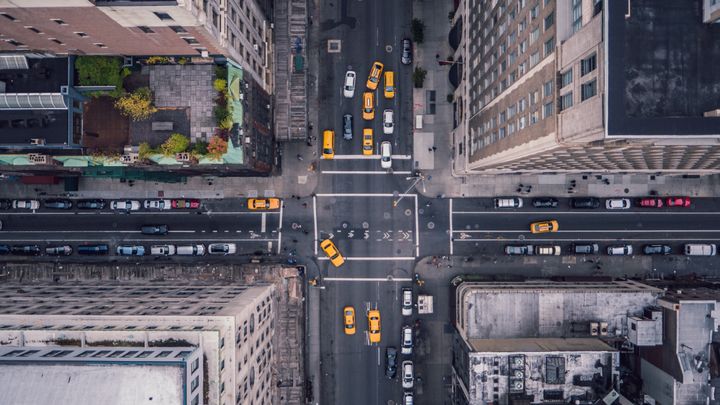
GM recently announced the company will start testing driverless cars in New York City in 2018.
The advent of driverless cars in our urban communities is imminent. In the last year, the ridesharing service Lyft has unveiled a self-driving pilot program in San Francisco, while its competitor, Uber, has rolled out similar programs in Pittsburgh, San Francisco, and Tempe, Arizona. Earlier this month, New York City Governor Andrew Cuomo announced that General Motors and Cruise Automation have applied to begin testing self-driving cars in Lower Manhattan as well.
While driverless cars have the potential to transform cities into more sustainable, economically productive places to live and work, they also have the potential to exacerbate urban inequality. The future impact of driverless technology depends largely on the ability of local leaders and public policy initiatives to prioritize these concerns. Recently, I moderated a panel discussion at the NYUSPS Schack Institute of Real Estate Urban Lab to discuss both the risks and advantages of autonomous vehicles to cities and urban economies.
Here are the five key insights (a detailed recap report is available here) that I took away from our discussion:
Reduce car ownership, not public transit.
Perhaps the most significant advantage of driverless technology is eliminating car dependency in urban areas. A recent report from the consulting firms Arcadis, HR&A Advisors, and Sam Schwartz finds that driverless technology allows all cities—no matter their size or density—to reduce car ownership and congestion. According to Eric Rothman, the president of HR&A Advisors, a heavily congested city like Los Angeles stands to benefit most from this technology. Indeed, his report shows that L.A. would experience a 36 to 44 percent shift from personal vehicles to self-driving and public transit as a result of driverless cars.
Despite these benefits, many have expressed concern that autonomous vehicles will decrease demand for public transit services like buses, subways, and light rail. For Jack Robbins, the Principal of FXFOWLE, driverless cars pose a “real risk” to public transit in cities. At the same time, driverless technology could revolutionize the way cities approach transit and infrastructure. “Traditional public transportation services in the U.S. are dominated by the 40-foot, 60-passenger bus with a unionized driver,” Rothman says. “In many places, the dominant cost is related to the cost of labor for that bus. … Driverless technology will enable able us to have different templates.”
Repurpose land used for parking.
As cities become less car dependent, they will soon be left with a significant share of unoccupied land in the form of empty parking spaces, lots, and garages. According to Robbins, this land makes up “a significant part of our publicly-owned territory that can be converted into something else.” In his “Public Square” design project—the recent winner of The Driverless Future Challenge—Robbins outlines a number of uses for reclaimed public space, including playgrounds, retail kiosks, gardens, and bike shares. Much of this will be made possible, Robbins argues, through public-private partnerships that pool their resources and help regulate these spaces in the years to come.
Prepare for a changing service industry.
Although driverless technology will most certainly ignite a paradigm shift in the service sector, the nature of this shift is difficult to predict. “Our point of view is that the need for human drivers is never going to go away entirely,” says Evan Cohen, Regional Director for Lyft. Because there are “all sorts of new roles that may emerge” from driverless technology, Cohen expects the net number of human drivers to stay the same.
But Rothman is less optimistic about the future of transportation-related service jobs. “We need to prepare ourselves for a great transition that may happen much more rapidly than many of us expect,” he says. Perhaps the best way for cities to prepare for driverless technology is to think about what transportation jobs will look like in the future. As cities begin to usher in a new era of autonomous vehicles, Rothman argues, they should consider buyouts for union workers or setting aside funds that employers can contribute to each year. At the moment, he says, “every solution needs to be on the table.”
Prioritize inclusion and affordability.
Autonomous vehicles have the potential to create deep-seated divides not only between low-income and affluent communities, but between individual residents as well. This makes the role of car-sharing and ride-sourcing apps all the more critical as they pioneer the future of urban transportation. “Historically, we do a bad job of supporting people whose lives are affected by big changes in technology,” Robbins says. Autonomous vehicles present an opportunity for growth, since they can be programmed to hover in lower-income neighborhoods rather than returning to dense urban cores, where demand is higher. Driverless cars can also make ridesharing more affordable, reliable, and easier to scale.
Use driverless technology to unlock new revenue streams.
With fewer cars on the road, cities will no longer be able to rely on parking fees as a major source of revenue. According a recent analysis from Governing, the 25 largest cities in the U.S. took in $5 billion in 2016 from vehicle-related revenue sources, including $1.5 billion from parking fees and taxes and another $1.3 billion from parking citations. But driverless technology allows for the formation of new revenue streams that are just as, if not more, lucrative. For Rothman, the biggest opportunity lies in road networks, which can be taxed as a public utility.
Robbins also predicts that driverless technology will spur economic development in outlying communities or transit deserts. Just as the invention of the elevator transformed top floors into a desired real estate amenity, so too can driverless technology transform underserved areas into coveted destinations to live and work. “With driverless technology, when we get it right, there’s going to be a huge societal gain,” Rothman says. Even so, cities cannot afford to be hasty with their plans. For Robbins and his fellow panelists, the uncertain future of driverless technology “underscores the need to be really clear about what our priorities are.”
Aria Bendix contributed to this piece.
